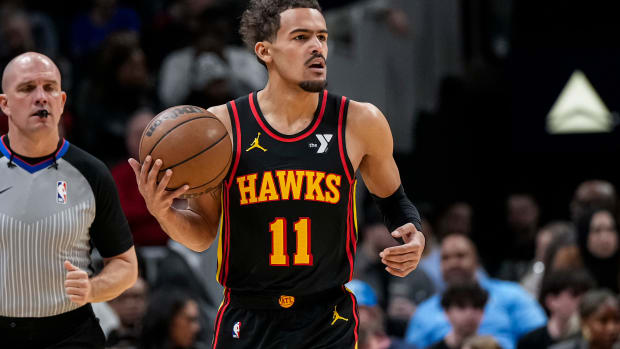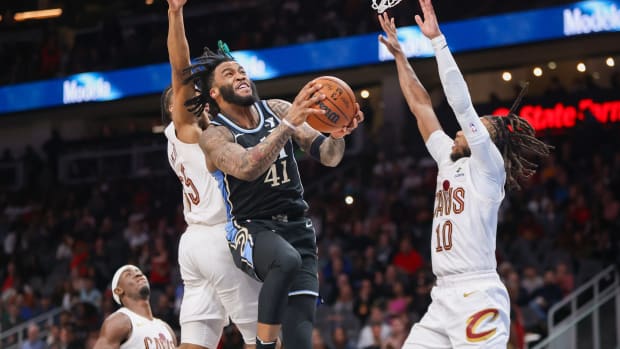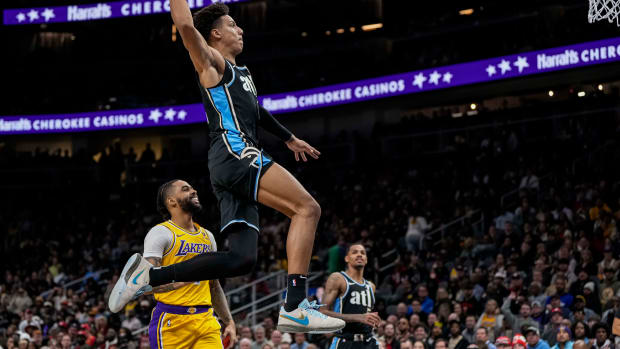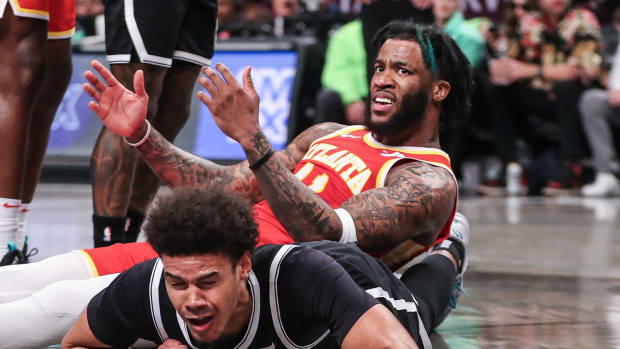2019-20 Season Review: Lloyd Pierce
Evaluating the merit of coaches on bad teams can often be more challenging than parsing the value of the players themselves. With arguably less influence over their team’s game-to-game success than ever before, most coaches are only as good as the talent with which they have to work. Judging young or unproven coaches solely by wins and losses ignores context and minimizes the importance of the process required to become a quality team. That makes the returns on Lloyd Pierce’s second season with the Hawks -- his entire tenure, really -- inconclusive.
The results of Atlanta’s 2020 season were undoubtedly poor, but the Hawks dealt with near-constant unavailability from key players, and likely would have topped out as a mediocre team even if all had gone according to plan. Pierce wasn’t perfect, but he became the target of misdirected frustration over the course of a long and disappointing season. The learning curve for coaches is similar to that of players. They must discover -- often by trial and error -- how to manage a rotation, when to spend timeouts, how to get the most out of the talent on the team, and so on. That isn’t a two-year process, and Pierce has seen both high and low moments in his first two seasons as a head coach.
His most notable misstep of the season came in Miami, when he pulled Trae Young from the game for a defensive possession, got his desired result, but then neglected to call timeout to get his star back in the game. DeAndre’ Bembry missed a wild, flailing layup in transition, and Atlanta squandered a chance to pick up a win on the road. Pierce has since owned up to that mistake multiple times, admitting he outsmarted himself and blew a good opportunity.
But he also hit the right notes down the stretch of other games, which understandably don’t get the same attention. Such is the life of an NBA head coach outside the playoff picture and the national consciousness. Much like the work of a referee, mistakes get magnified while correct decisions usually go off without a second thought, and most viewers can only evaluate what happens in games. Much of Pierce’s work occurs behind the scenes -- namely developing players and helping build a sustainable culture. He gives players room to experiment and grow their games and his staff focuses heavily on player development. Most every young player in Atlanta’s system has improved noticeably under Pierce, and while it’s too early to definitively assess his job performance in that area, he and his staff are off to an encouraging start.
Pierce arrived in Atlanta with a defensive reputation, but his offensive acumen has stood out more prominently last year (having Young to run the show helps). He showed tactical cleverness and creativity this season, and rightly empowered Young to carry one of the largest workloads in the NBA. He incorporates off-ball movement and decoys into sets effectively, giving defenses something other than Young to think about. Pierce’s playbook wasn’t particularly deep, but it was reasonably well-crafted. He’ll frequently call the same play several times in a row until the opponent stops it -- an uncomplicated approach suited for a young team -- and his sets are often layered with counters to punish teams when they start to catch on:
Reddish comes off a flat screen from De’Andre Hunter, and the initial look isn’t there. But that’s only a prelude to the real action, which allows Reddish to separate from Donte DiVincenzo (typically an outstanding off-ball defender) and loop around a staggered pin-down for 3 as Hunter pivots into a pick-and-roll with Young. Brook Lopez -- ostensibly guarding Damian Jones -- sits back in the paint to take away the rim, and Reddish cans the jumper. The next play, Milwaukee adjusts: DiVincenzo maintains contact with Reddish and Lopez steps out to take away the pass. But with three defenders occupied on the right wing, the Bucks have no help defense at the rim, and Hunter finishes an uncontested lob.
Pierce generally designed good sets this year; Atlanta simply didn’t have the shooting or secondary playmaking to capitalize on some of the advantages they created. He eventually came around to calling more small-small pick-and-rolls with Young and a wing when John Collins and Kevin Huerter were injured. His willingness to employ a zone defense for long stretches helped the Hawks much up the game without a defensive anchor to hold them together.
Pierce could be slightly more creative on out-of-bounds plays late in games and less conservative sitting players in foul trouble, but he generally has a solid grasp on the most important in-game coaching moves. (He was 8-of-21 on challenges this season, just below the league-average success rate.) With a more complete roster, Pierce smartly used Young as a decoy from time to time to spring other players open. It seems that he’d like to unleash Young as an off-ball weapon more often, but didn’t have quite the surrounding talent to do so and couldn’t get Young to fully invest in that kind of role.
There is likely still a middle ground to be found between Pierce and Young, both stylistically and -- evidently -- personally. Young has never been particularly enthusiastic in his endorsements of his head coach, and Chris Kirschner of The Athletic reported last month that their relationship is “not strong.” Young has bristled at some of Pierce’s decisions, and both he and his father have engaged in passive-aggressive behavior on Twitter that would indicate doubt of and frustration with Pierce.
Bridging that divide -- however wide it is -- will, frankly, require more effort on Young’s part. Save for the Miami incident and Pierce’s initial comments on Young being left off the 44-man USA Basketball pool, it’s unclear what exactly Young would be upset about. The Hawks gave him the keys to their offense immediately, and it’s hard to imagine a coach affording Young more leeway than Pierce has. The relationship doesn’t appear to be unsalvageable, and there’s currently no reason Pierce shouldn’t be the Hawks’ head coach for the foreseeable future. But Young will always hold more power within the organization than his coach, and if tension comes to a head, he’ll get his way.
It will be worth monitoring that relationship moving forward. For most of the season, Pierce seemed committed to Travis Schlenk’s long-term vision and the process of rebuilding; Young understandably hoped for better immediate results. Part of what made Pierce’s comments about making the playoffs in 2021 so striking was the contrast to his constant tempering of expectations earlier in the year. Perhaps more aligned expectations for next season could help bring star player and coach closer together.
Next season will be a pivotal one for Pierce and the Hawks. The result of each game will matter in a way it hasn’t for the last two years, and the organization will begin to judge Pierce by the team’s record rather than just the growth of its young players. Pierce partly turned the heat up on himself by declaring Atlanta a “playoff team”. The Hawks may hold him to his word.




